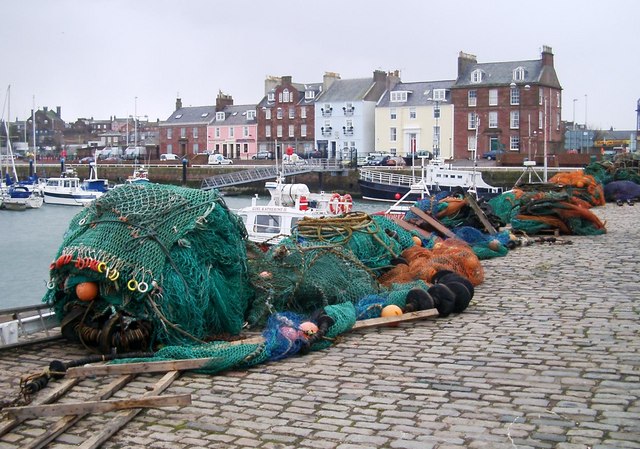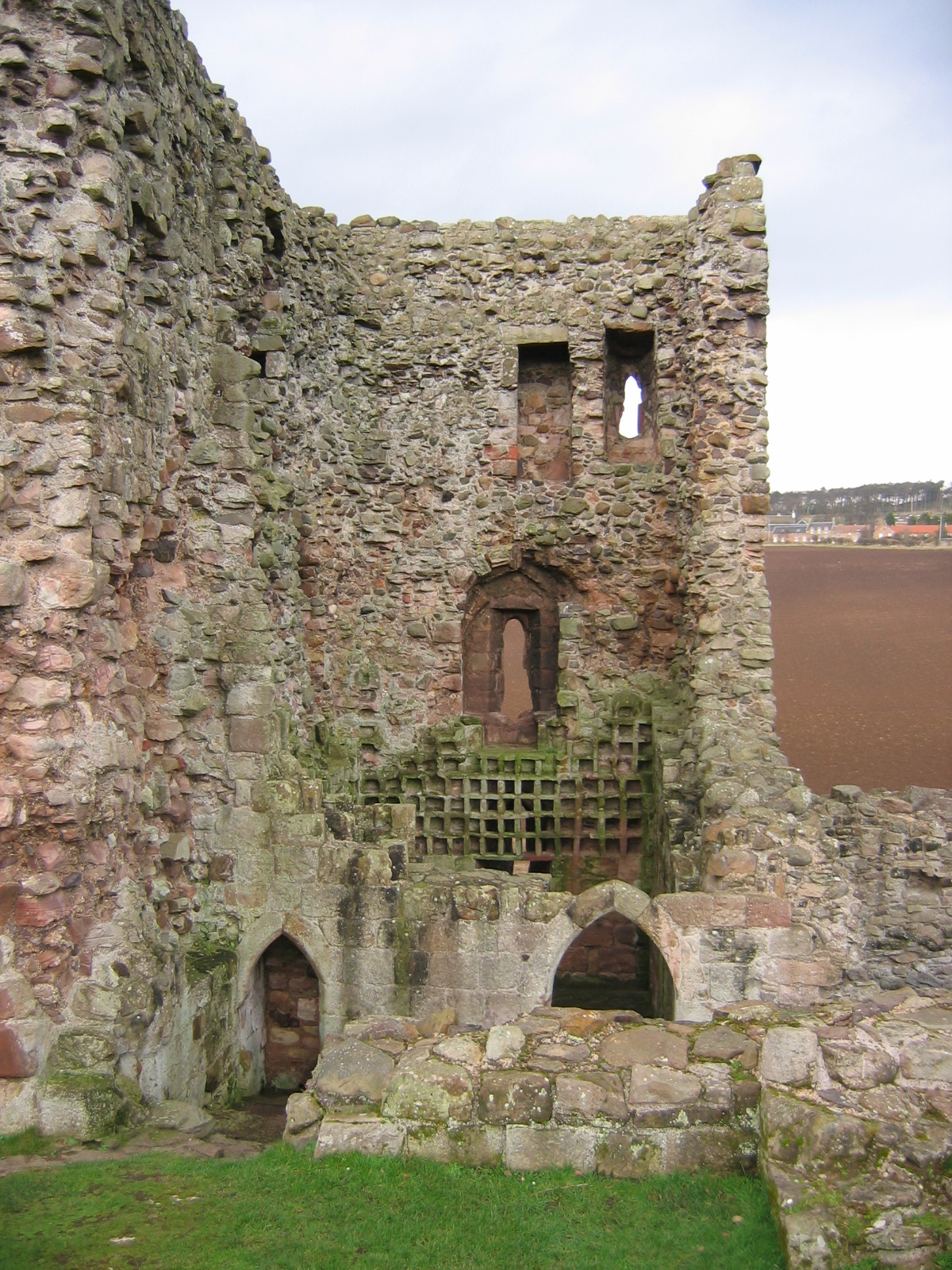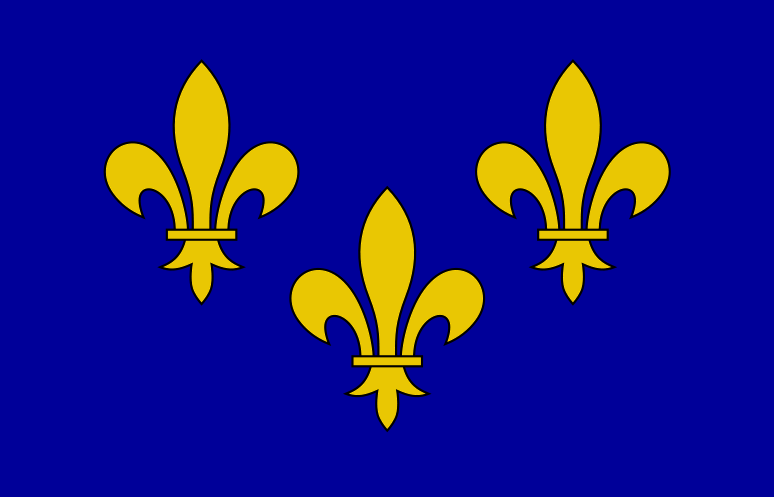|
John Cockburn Of Ormiston
John Cockburn, (d. 1583) laird of Ormiston, East Lothian, Scotland, was an early supporter of the Scottish Reformation. He was the eldest son of William Cockburn of Ormiston and Janet Somerville. John was usually called "Ormiston." During his lifetime there was also a laird of Ormiston in Teviotdale near Eckford, an ally of the rival Hepburn family. A Scottish Protestant in the Rough Wooing John Cockburn was a prominent Protestant and also on good terms with England, having a licence to trade there during the war of the Rough Wooing. He was pardoned for communing with the English during Lord Hertford's expedition in 1544. John Knox was tutor to one of his sons, and the Protestant preacher and martyr George Wishart was arrested by James Hepburn, 4th Earl of Bothwell, the Sheriff of Haddingtonshire, at his House of Ormiston on 16 January 1546. After negotiation Bothwell took Wishart away to nearby Elphinstone Castle. Soon after on the same night, soldiers of the Governor o ... [...More Info...] [...Related Items...] OR: [Wikipedia] [Google] [Baidu] |
Ormiston Cross - Geograph
Ormiston is a village in East Lothian, Scotland, near Tranent, Humbie, Pencaitland and Cranston, Midlothian, Cranston, located on the north bank of the River Tyne, Scotland, River Tyne at an elevation of about . The village was the first planned village in Scotland, founded in 1735 by John Cockburn (Scottish politician), John Cockburn (1685–1758), one of the initiators of the British Agricultural Revolution, Agricultural Revolution. Name The word Ormiston is derived from a half mythical Norwegian Viking settler called ''Ormr'', meaning 'serpent' or 'snake'. 'Ormres' family had possession of the land during the 12th and 13th centuries. Ormiston or 'Ormistoun' is not an uncommon surname, and ''Ormr'' also survives in some English placenames such as Ormskirk and Ormesby. The latter part of the name, formerly spelt 'toun', is likely to descend from its Northumbrian Old English and later Scots language, Scots meaning as 'farmstead' or 'farm and outbuildings' rather than the me ... [...More Info...] [...Related Items...] OR: [Wikipedia] [Google] [Baidu] |
Alexander Crichton Of Brunstane
Alexander Crichton of Brunstane, (died before December 1558), was a Scottish Protestant laird who advocated the murder of Cardinal David Beaton and supported the plan for the marriage of Mary, Queen of Scots and Prince Edward of England. In contemporary letters and documents Alexander is known by variant spellings of " Brunstane," his territorial designation. The original House of Brunstane was near Penicuik, and another Crichton estate at Gilberstoun near Portobello, Edinburgh later became known as Brunstane. Career Affair of the Cardinal's letters Alexander Crichton went to France carrying royal letters in 1539 and as a servant of Cardinal Beaton. On his return in February 1540 his ship was forced by a storm to anchor in an English harbour. Subsequently, the English ambassador in Scotland Ralph Sadler tried to embarrass and discredit Cardinal Beaton in front of James V of Scotland with compromising letters captured from Brunstane's bag. James V however argued in favour of the ... [...More Info...] [...Related Items...] OR: [Wikipedia] [Google] [Baidu] |
Broughty Castle
Broughty Castle is a historic castle on the banks of the River Tay in Broughty Ferry, Dundee, Scotland. It was completed around 1495, although the site was earlier fortified in 1454, when George Douglas, 4th Earl of Angus, received permission to build on the site. His son, Archibald Douglas, 5th Earl of Angus, was coerced into ceding the castle to the crown. The main tower house forming the centre of the castle with four floors was built by Andrew, 2nd Lord Gray, who was granted the castle in 1490. History The Rough Wooing The castle saw military action during the 16th-century War of the Rough Wooing. After the battle of Pinkie in September 1547, it was surrendered by purchase to the English by its owner, Lord Gray of Foulis. A messenger from the castle, Rinyon (Ninian) Cockburn, who spoke to the English supreme commander the Duke of Somerset before the castle was rendered was given a £4 reward. The Scottish keeper, Henry Durham, was rewarded with an English pension, i ... [...More Info...] [...Related Items...] OR: [Wikipedia] [Google] [Baidu] |
John Luttrell (soldier)
Sir John Luttrell (c. 1518/19 – 10 July 1551) feudal baron of Dunster in Somerset, of Dunster Castle, was an English soldier, diplomat, and courtier under Henry VIII and Edward VI. He served under Edward Seymour, Earl of Hertford (later Duke of Somerset and Lord Protector) in Scotland and France. His service is commemorated in an allegorical portrait by Hans Eworth. Life and military career John Luttrell was the eldest son of Sir Andrew Luttrell of Dunster Castle, Somerset by his wife, Margaret, daughter of Sir Thomas Wyndham. He married Mary, daughter of Sir Griffith Ryce and Katherine Edgcumbe, by whom he had three daughters, Catherine, Dorothy, and Mary. John Luttrell, his younger brother, and his uncle Thomas Wyndham served as boy pages in the household of Cardinal Wolsey during his embassy to France in July 1527. Luttrell accompanied Edward Seymour, Earl of Hertford in the first stages of the military expeditions to Scotland known as the Rough Wooing and was present ... [...More Info...] [...Related Items...] OR: [Wikipedia] [Google] [Baidu] |
Hailes Castle
Hailes Castle is a mainly 14th century castle about a mile and a half south-west of East Linton, East Lothian, Scotland. This castle, which has a fine riverside setting, belonged to the Hepburn family during the most important centuries of its existence. Since 1926, it has been the subject of a state-sponsored guardianship agreement, which is now under the auspices of Historic Environment Scotland as a scheduled monument. The land adjacent to the castle is open to the public without charge. However, since 2020 access to the inside of the castle itself has been closed off with high security fencing due to safety issues. Proprietors The castle was founded as a fortified tower house by Hugo de Gourlay before 1300, making it one of the oldest constructions of its kind in Scotland. The superiority of the lands was held by the Earls of Dunbar and March. The de Gourlays, a Northumbrian family, supported the English in the Wars of Independence, and their land was forfeited by order ... [...More Info...] [...Related Items...] OR: [Wikipedia] [Google] [Baidu] |
John Hamilton (archbishop Of St Andrews)
John Hamilton (3 February 1512 – 6 April 1571), Scottish prelate and politician, was an illegitimate son of James Hamilton, 1st Earl of Arran, The 1st Earl of Arran (in the Peerage of Scotland). Brother of the Regent At a very early age Hamilton became a monk and Abbot of Paisley. After studying in Paris he returned to Scotland, where he soon rose to a position of power and influence under his half-brother, James Hamilton, Duke of Châtellerault, The 2nd Earl of Arran, who was serving as Regent. He was made Keeper of the Privy Seal of Scotland in 1543 and bishop of Dunkeld two years later; in 1546 he followed David Cardinal Beaton, Cardinal Beaton as Archbishop of St Andrews, and about the same time he became treasurer of the kingdom. In 1553 the Italian physician Gerolamo Cardano cured him of a disease that had left him speechless and was thought incurable. The diplomat Thomas Randolph (diplomat), Thomas Randolph recorded the "merry tales" rumoured about his methods still cur ... [...More Info...] [...Related Items...] OR: [Wikipedia] [Google] [Baidu] |
Siege Of Haddington
The sieges of Haddington were a series of sieges staged at the Royal Burgh of Haddington, East Lothian, Scotland, as part of the War of the Rough Wooing, one of the last Anglo-Scottish Wars. Following Regent Arran's defeat at the battle of Pinkie Cleugh on Saturday 10 September 1547, he captured the town of Haddington. The intention was to form a network of mutually supporting English forts in lowland Scotland. The English forces built artillery fortifications and were able to withstand an assault by the besieging French and Scots troops supported by heavy cannon in July 1548. Although the siege was scaled down after this unsuccessful attempt, the English garrison abandoned the town on 19 September 1549, after attrition by Scottish raids at night, sickness, and changing political circumstance. The English dig in The English commander, Grey of Wilton, captured and garrisoned Haddington and outlying villages by 23 February 1548. The garrison included 200 Albanian Stratioti who ... [...More Info...] [...Related Items...] OR: [Wikipedia] [Google] [Baidu] |
William Grey, 13th Baron Grey De Wilton
William Grey, 13th Baron Grey de Wilton (1508/1509 – 14 December 1562), was an English baron and military commander serving in France in the 1540s and 1550s, and in the The Rough Wooing, Scottish Wars of the 1540s. Early life Grey was the thirteenth Baron Grey de Wilton, fourth son of Baron Grey de Wilton#Grey family, Edmund Grey, 9th Baron Grey de Wilton (died 1511) and Florence Hastings, eldest daughter of Ralph Hastings (died 1495), Sir Ralph Hastings. He was first summoned to parliament on 3 November 1529, by King Henry VIII of England. Service in France, 1544–1547 During the Italian War of 1542–1546, Grey was a commander in the expedition against France in 1544, under John Russell, 1st Earl of Bedford, John, lord Russell, and assisted in the siege of Montreuil, Pas-de-Calais, Montreuil. There seems to have been some jealousy between Grey and the Henry Howard, Earl of Surrey, Earl of Surrey. Grey had been appointed chief captain of the army called 'the Crews,' an ... [...More Info...] [...Related Items...] OR: [Wikipedia] [Google] [Baidu] |
Assured Scots
Assured Scots were Scottish people who pledged to support English plans for Mary, Queen of Scots to marry Edward VI of England during the war of the Rough Wooing between 1543 and 1550. They took "assurances" and some received English pension money. Their motivations varied, and included favouring amity with England and their Scottish Reformation, support for Protestant faith while Scotland was a Catholic country. Prequel In October 1542, a Scottish army was defeated at battle of Solway Moss near Longtown, Cumbria, Longtown and Sandysike in England. A number of Scottish noblemen and lairds were captured. These gave assurances to Henry VIII, and many were released on licence and sent a substitute family member as a pledge or hostage into captivity in England, after undertaking to support English policy. In March 1544, Henry VIII sent a herald to demand the return to English captivity of a number of these Scottish nobles who were not acting in accord with his wishes. Assured Scots Jam ... [...More Info...] [...Related Items...] OR: [Wikipedia] [Google] [Baidu] |
Edward VI Of England
Edward VI (12 October 1537 – 6 July 1553) was King of England and King of Ireland, Ireland from 28 January 1547 until his death in 1553. He was crowned on 20 February 1547 at the age of nine. The only surviving son of Henry VIII by his third wife, Jane Seymour, Edward was the first English monarch to be raised as a Protestant. During his reign, the realm was governed by a regency council because Edward never reached maturity. The council was first led by his uncle Edward Seymour, Duke of Somerset (1547–1549), and then by John Dudley, Duke of Northumberland (1550–1553). Edward's reign was marked by many economic problems and social unrest that in 1549 erupted into riot and rebellion. An expensive Rough Wooing, war with Kingdom of Scotland, Scotland, at first successful, ended with military withdrawal from Scotland and Boulogne-sur-Mer in exchange for peace. The transformation of the Church of England into a recognisably Protestant body also occurred under Edward, who too ... [...More Info...] [...Related Items...] OR: [Wikipedia] [Google] [Baidu] |
William Patten (historian)
William Patten (c. 1510 – after 1598) was an author, scholar and government official during the reigns of King Edward VI and Queen Elizabeth I. Early career William Patten (b. circa 1510 – d. in or after 1598) was born in London, the son of Richard Patten (d. 1536), clothworker, and Grace, the daughter of John Baskerville. His grandfather, Richard Patten of Boslow, Derbyshire, was a brother of William Waynflete (alias Patten), Bishop of Winchester. William Patten's mother, Grace, is said to have predeceased her husband. His sister, Alice (d.1557/8), was the wife of Armagil Waad, whom Patten referred to as a 'friend' in his ''Expedition into Scotland'' (see below). Patten is said to have attended Gonville Hall, Cambridge, and from 1528 was a minor chaplain and from 1533 a parish clerk of St Mary-at-Hill, Billingsgate, London. In 1544 Patten was in France in service as a secretary of the Earl of Arundel. In 1547 he accompanied Somerset's army to Scotland in the capacit ... [...More Info...] [...Related Items...] OR: [Wikipedia] [Google] [Baidu] |
Battle Of Pinkie
The Battle of Pinkie, also known as the Battle of Pinkie Cleugh (), took place on 10 September 1547 on the banks of the River Esk near Musselburgh, Scotland. The last pitched battle between Scotland and England before the Union of the Crowns, it was part of the conflict known as the Rough Wooing. It was a catastrophic defeat for Scotland, where it became known as "Black Saturday".Phillips, p. 193 A highly detailed and illustrated English account of the battle and campaign authored by an eyewitness William Patten was published in London as propaganda four months after the battle. Background During the final years of his reign, King Henry VIII of England tried to secure an alliance with Scotland by the marriage of the infant Mary, Queen of Scots to his young son, the future Edward VI. When diplomacy failed, and Scotland was on the verge of an alliance with France, he launched a war against Scotland that has become known as the Rough Wooing. The war also had a religious aspect; ... [...More Info...] [...Related Items...] OR: [Wikipedia] [Google] [Baidu] |








